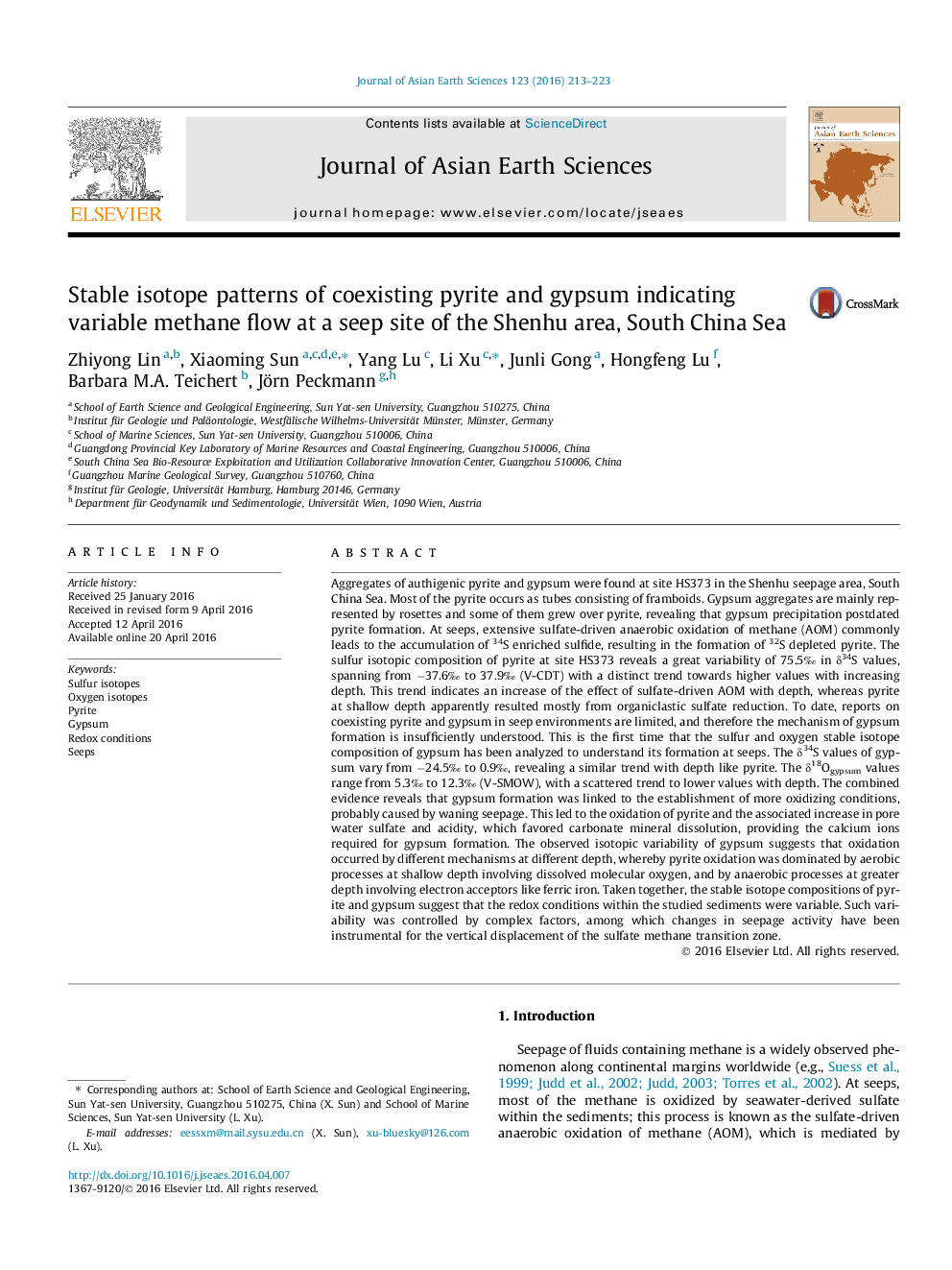| کد مقاله | کد نشریه | سال انتشار | مقاله انگلیسی | نسخه تمام متن |
|---|---|---|---|---|
| 4730014 | 1640348 | 2016 | 11 صفحه PDF | دانلود رایگان |

• Coexisting pyrite and gypsum are useful archives of redox conditions at cold seeps.
• Sulfur and oxygen isotope compositions of gypsum were analyzed for the first time.
• Authigenic pyrite reveals a great variability of δ34S and indicates intensive sulfate-driven AOM.
Aggregates of authigenic pyrite and gypsum were found at site HS373 in the Shenhu seepage area, South China Sea. Most of the pyrite occurs as tubes consisting of framboids. Gypsum aggregates are mainly represented by rosettes and some of them grew over pyrite, revealing that gypsum precipitation postdated pyrite formation. At seeps, extensive sulfate-driven anaerobic oxidation of methane (AOM) commonly leads to the accumulation of 34S enriched sulfide, resulting in the formation of 32S depleted pyrite. The sulfur isotopic composition of pyrite at site HS373 reveals a great variability of 75.5‰ in δ34S values, spanning from −37.6‰ to 37.9‰ (V-CDT) with a distinct trend towards higher values with increasing depth. This trend indicates an increase of the effect of sulfate-driven AOM with depth, whereas pyrite at shallow depth apparently resulted mostly from organiclastic sulfate reduction. To date, reports on coexisting pyrite and gypsum in seep environments are limited, and therefore the mechanism of gypsum formation is insufficiently understood. This is the first time that the sulfur and oxygen stable isotope composition of gypsum has been analyzed to understand its formation at seeps. The δ34S values of gypsum vary from −24.5‰ to 0.9‰, revealing a similar trend with depth like pyrite. The δ18Ogypsum values range from 5.3‰ to 12.3‰ (V-SMOW), with a scattered trend to lower values with depth. The combined evidence reveals that gypsum formation was linked to the establishment of more oxidizing conditions, probably caused by waning seepage. This led to the oxidation of pyrite and the associated increase in pore water sulfate and acidity, which favored carbonate mineral dissolution, providing the calcium ions required for gypsum formation. The observed isotopic variability of gypsum suggests that oxidation occurred by different mechanisms at different depth, whereby pyrite oxidation was dominated by aerobic processes at shallow depth involving dissolved molecular oxygen, and by anaerobic processes at greater depth involving electron acceptors like ferric iron. Taken together, the stable isotope compositions of pyrite and gypsum suggest that the redox conditions within the studied sediments were variable. Such variability was controlled by complex factors, among which changes in seepage activity have been instrumental for the vertical displacement of the sulfate methane transition zone.
Figure optionsDownload as PowerPoint slide
Journal: Journal of Asian Earth Sciences - Volume 123, 1 June 2016, Pages 213–223